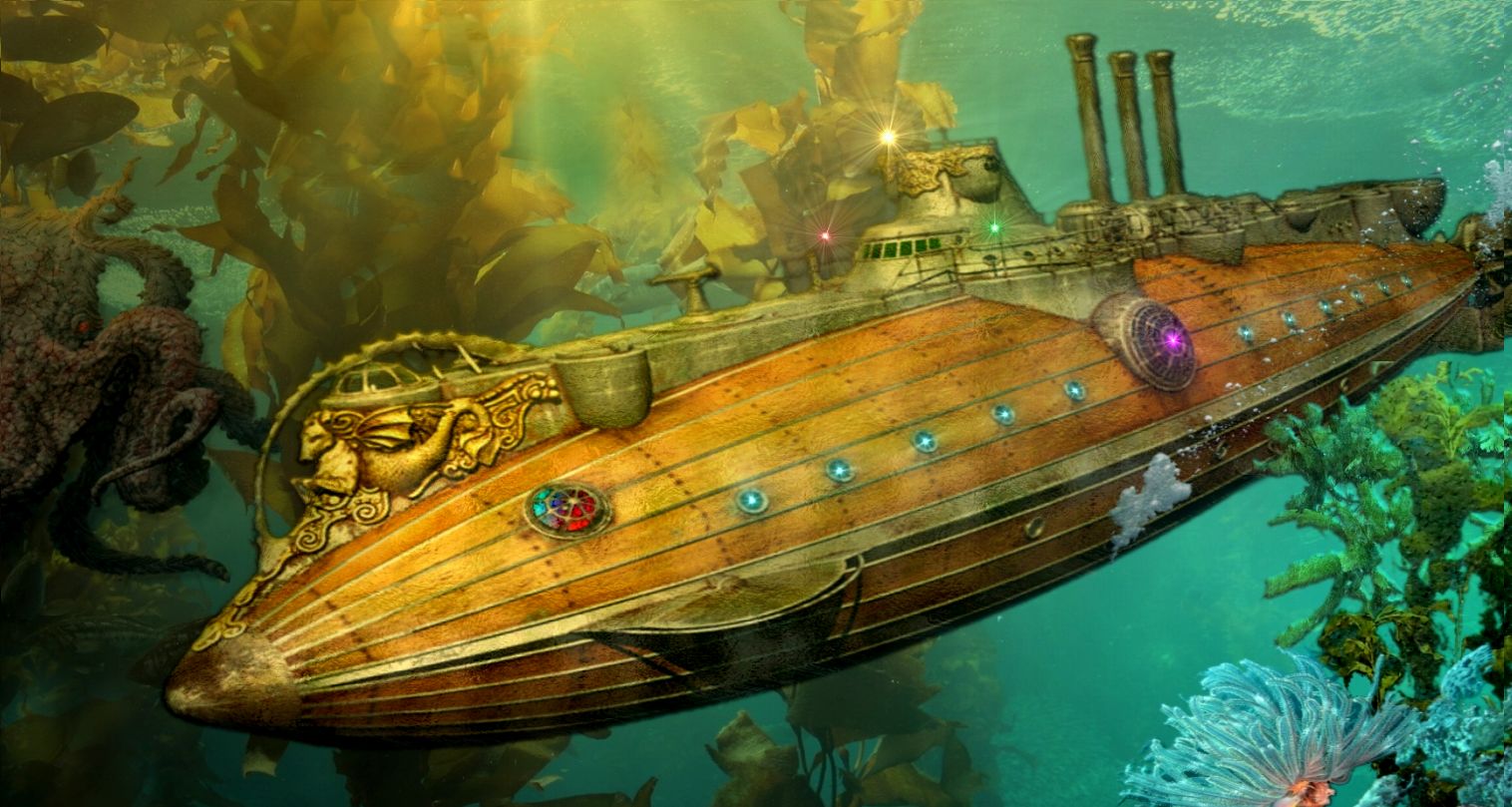|

Best
known for '20,000
Leagues Under the Sea' and Around
The World In Eighty Days, Jules Verne also authored a number of
other popular novels, that made it onto the big screen, such as 'The
Mysterious Island,' and 'Journey To The Centre Of The World.'
Round
the Moon is a sequel to: 'From The Earth to the
Moon.'
PLOT
Having been fired out of the giant Columbiad space gun, the Baltimore Gun Club's bullet-shaped projectile, along with its three passengers, Barbicane, Nicholl and Michael Ardan, begins the five-day trip to the Moon. A few minutes into the journey, a small, bright asteroid passes within a few hundred yards of them, but does not collide with the projectile. The asteroid had been captured by the Earth's gravity and had become a second moon.
The three travelers undergo a series of adventures and misadventures during the rest of the journey, including disposing of the body of a dog out a window, suffering intoxication by gases, and making calculations leading them, briefly, to believe that they are to fall back to Earth. During the latter part of the voyage, it becomes apparent that the gravitational force of their earlier encounter with the asteroid has caused the projectile to deviate from its course.
The projectile enters lunar orbit, rather than landing on the Moon as originally planned. Barbicane, Ardan and Nicholl begin geographical observations with opera glasses. The projectile then dips over the northern hemisphere of the Moon, into the darkness of its shadow. It is plunged into extreme cold, before emerging into the light and heat again. They then begin to approach the Moon's southern hemisphere. From the safety of their projectile, they gain spectacular views of Tycho, one of the greatest of all craters on the Moon. The three men discuss the possibility of life on the Moon, and conclude that it is barren. The projectile begins to move away from the Moon, towards the 'dead point' (the place at which the gravitational attraction of the Moon and Earth becomes equal). Michel Ardan hits upon the idea of using the rockets fixed to the bottom of the projectile (which they were originally going to use to deaden the shock of landing) to propel the projectile towards the Moon and hopefully cause it to fall onto it, thereby achieving their mission.
When the projectile reaches the point of neutral attraction, the rockets are fired, but it is too late. The projectile begins a fall onto the Earth from a distance of 260,000 kilometres (160,000 mi), and it is to strike the Earth at a speed of 185,400 km/h (115,200 mph), the same speed at which it left the mouth of the Columbiad. All hope seems lost for Barbicane, Nicholl and Ardan. Four days later, the crew of a US Navy vessel, Susquehanna, spots a bright meteor fall from the sky into the sea. This turns out to be the returning projectile. A rescue operation is assembled, intending to raise the capsule from a depth of 20,000 feet, using diving bells and steam-powered grappling claws. After several days of fruitless searches, all hope is lost and the rescue party heads home. On the way back, a lookout spots a strange shining buoy. Only then the rescuers realize that the hollow alluminium projectile had positive buoyancy and thus must have surfaced after impact. The 'buoy' turns out to be the projectile and three men inside are found to be alive and well. They are treated to lavish homecoming celebrations as the first people to leave Earth.
..
Jules
Verne was the author of many adventure stories:
1
Twenty Thousand Leagues Under the Sea
2 Around the World in Eighty Days
3 Journey to the Center of the Earth
4 The Mysterious Island (Extraordinary Voyages #12)
5 From the Earth to the Moon
6 Michael Strogoff (Extraordinary Voyages, #14)
7 In Search of the
Castaways; or the Children of Captain Grant (Extraordinary Voyages, #5)
8 Five Weeks in a Balloon
9
Round the Moon (Extraordinary Voyages, #7)
10 Adrift in the
Pacific: Two Years Holiday (Extraordinary Voyages, #32)
11 The Master of the World (Extraordinary Voyages, #53)
12 The Adventures of Captain Hatteras
13 Les Tribulations d'un Chinois en Chine;
The Tribulations of a Chinese in China (Extraordinary Voyages, #19)
14 The Lighthouse at the End of the World
15 Mathias Sandorf (Extraordinary Voyages, #27)
16 Off On A Comet (Extraordinary Voyages, #15)
17 Los quinientos millones de la Begún (The five hundred million of the
Begún)
18 Facing the Flag (Extraordinary Voyages, #42)
19 Un capitán de quince años (A fifteen year old captain)
20 El Testamento de un excentrico (The Testament of an eccentric)

Jules
Verne is also known as the Father of Science Fiction
|
|
It
was Jules Verne's
fictional character, 'Philleas
Fogg', who suggested that it might be possible to travel Around The
World In 80 Days. But what about doing it in a Zero
Emission yacht driven by electric
hydro-jets? With the advent of solar power and liquid
hydrogen, it is a distinct possibility - on a scale of the wager
that the legendary Philleas Fogg entered into at the Reform Club in
1872.
In 1874,
Jules Verne set out a prescient vision that has inspired governments and entrepreneurs in the
147 years since. In his book The Mysterious
Island, Verne wrote of a world where "water will one day be employed as fuel, that
hydrogen and
oxygen which constitute it, used singly or together, will furnish an inexhaustible source of heat and light, of an intensity of which
coal is not capable."
In
2021 we have the technology to make that foretelling a reality, to
include using hydrogen to travel around the world in 80 days.
JULES
VERNE LINKS
& REFERENCE
http://jules-verne.org/
http://jules-verne.org/
|


